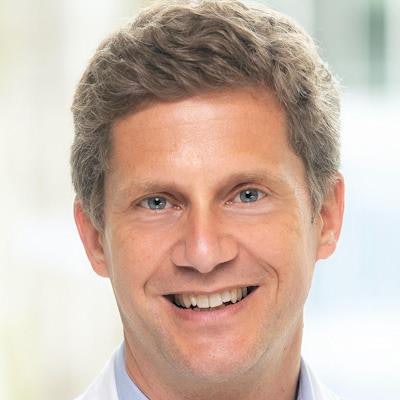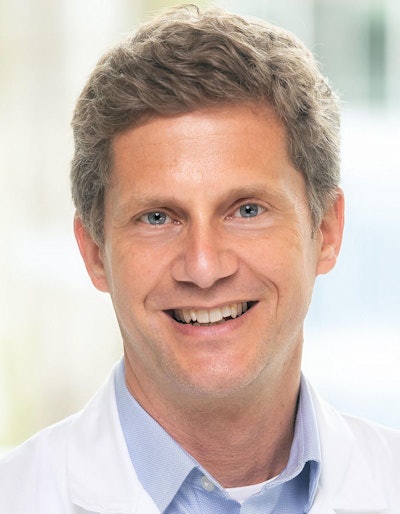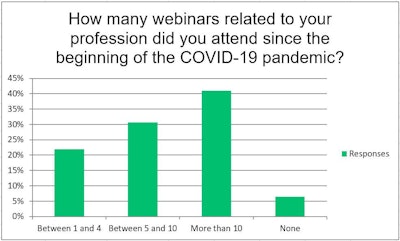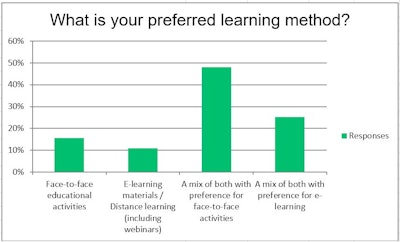
Too little is known about the pandemic's impact on continuing medical education (CME) and continuing professional development (CPD). To plan for the future, we urgently need more information and data.
 Prof. Dr. Christian Loewe.
Prof. Dr. Christian Loewe.The Accreditation Council in Imaging (ACI) of the European Board of Radiology (EBR) observed a 21% drop in applications for accreditation of educational events in 2020, compared with 2019. This is a clear indicator of the dramatic influence of the pandemic on CME, but detailed information about the influence on the customers' side is still missing. Consequently, the ACI launched a survey among members of the European Society of Radiology (ESR) to learn more about the impact of COVID-19.
The survey was launched by email on 2 December 2020. A response deadline of two weeks was given. A total of 27 questions were defined by the ACI leadership.
The survey reached 119,791 individual ESR members, of whom 34,701 opened the mail. A total of 1,385 clicked on the survey link, and 934 respondents from 105 countries completed the survey, giving a total response rate of 1.15%. Not every respondent answered all of the questions, so the number of answers received might have been smaller for several questions. The majority (43%) of respondents were between the ages of 40 and 55. About 32% were 40 or younger, and about 21% were between 55 and 75.
The first group of questions aimed to assess possible differences and changes between the pre-COVID situation as compared to the pandemic year in 2020. To be able to assess these changes, we asked for two different parameters about CME -- always referring to before and since the beginning of the pandemic.
Face-to-face events
A total of 555 respondents (almost 60%) stated that they attended between one and four face-to-face events per year in the prepandemic era, and another 337 (36%) attended more than four. Only 42 respondents said they had attended no face-to-face meetings before the pandemic.
Since the start of the pandemic, 629 respondents (67%) have not attended a single face-to-face meeting. 202 (22%) attended between one and four per year, and 103 (11%) attended more than four.
In relation to the advantages of face-to-face meetings, the respondents pointed out the value of professional networking (32%), social networking (13%), the possibility of hands-on teaching and small group settings (26%), as well as being free of other obligations while attending a face-to-face educational event (26%). 45% of respondents answering the respective question claimed to cover costs for travel and housing for face-to-face events themselves, 37% received partial support, and 16% stated that their institution had taken care of the costs.
It's important to bear in mind that CME and CPD are still not mandatory in every nation.
112 respondents (12%) stated that no CME or CPD system was available in their country. 487 (52%) stated that such a system was available and mandatory, and another 335 (36%) reported that CME and CPD are available as an optional system.
The question about the suspension of CME/CPD requirements during the pandemic was skipped by 137 respondents. Of the 797 participants who responded to the question, 455 (57%) stated that the requirements had been suspended or at least reduced since the COVID-19 outbreak. This suspension or reduction applied to about 61% of the respondents in 2020; for the remaining 39%, the reduction/suspension was continued into 2021.
E-learning and webinars
Exactly one-third of all respondents (n = 831) answering the question related to the time spent on e-learning before the pandemic used to spend more than 20 hours per year with this medium; slightly more than a third spent about five to 20 hours per year on e-learning, and the remaining 30% used to spend less than five hours or no hours on e-learning prior to 2020.
After spring 2020, these figures have changed, and 58% of the respondents were spending more than 20 hours per year on e-learning materials, with only 13% spending less than five or no hours with them. The number of respondents spending five to 20 hours remained more or less unchanged.
The percentage of colleagues attending more than 10 webinars per year increased from 8% in the prepandemic era to 41% in the COVID-19 era. The percentage of respondents who spent no time at all in webinars fell from 32% to 6%.

In general, the users appreciate the fact that on-demand content can be consumed whenever suitable (58%) and the fact that there is no need to take days off or travel (40%). Regarding financial support for the consummation of e-learning, the situation is comparable to face-to-face meetings, with 48% paying by themselves, 15% receiving partial financial support, and 11% getting full funding from their institution. Interestingly, about 25% stated that they only consume e-learning if it is free-of-charge.
Half of respondents said they had not received any protected time to attend online meetings, whereas 24% did receive protected time. Another 15% were only supported with protected time for their attendance at face-to-face meetings. Twenty-seven percent were asked in the prepandemic period to attend a certain number of face-to-face meetings per year, and 11% were asked to attend a certain number of online courses per year. For about two-thirds of participants, the number of face-to-face meetings required has been revised or suspended since the start of the pandemic, and the use of more e-learning was requested. The remaining 64% were not asked by their employers to attend a given number of events, congresses, or courses.
Views about the future
There was a clear majority in favor of both face-to-face and e-learning, with a preference for face-to-face meetings (48%), followed by a mix of both with a preference for e-learning. Only 15% and 11% preferred face-to-face or e-learning only, respectively.
Despite this clear vote for face-to-face meetings in combination with e-learning, 66% of respondents were convinced that e-learning will gain further ground in medical education and will prevail. For 30% of the participants, there is an obligation from their employing institution to attend congresses and/or courses. For the other 70%, such obligations do not exist. 90% were convinced that e-learning events bring savings in costs and time in comparison to face-to-face meetings.

Overall, the pandemic has influenced all aspects of our private and professional lives across the world. Based on travel restrictions, lockdowns, and the cancellation of larger gatherings, face-to-face conferences, congresses, and educational courses have been mainly suspended for 18 months now. This has challenged the need for CME and CPD, and initiated a huge trend towards online education resources, mainly consisting of webinars and on-demand e-learning, as well as virtual live educational events.
The present survey as performed by the ACI as the organization responsible for accreditation of educational events in radiology -- in close cooperation with the European Accreditation Council for CME (EACCME) of the European Union of Medical Specialists (UEMS) -- showed a different picture: despite the clear preference of the respondents for face-to-face meetings, the majority are convinced that e-learning will prevail as a substantial part of educational and professional development in the future for the sake of time and cost savings.
A major downside of e-learning events is the lack of human interaction, namely professional and social networking, as well as the important fact that half of the respondents do not receive any protected time to spend on e-learning. Without a substantial change from employers in this approach, a decrease in the total hours spent on education and CME seems to represent a realistic scenario. A similar approach to e-learning events as for face-to-face events, regarding funding and protected time, appears to be desirable.
Facing the fact that human interaction cannot effectively be replaced in online interactions, the AC leadership would appreciate a healthy combination between e-learning materials and events and face-to-face meetings in the -- hopefully near -- postpandemic future.
Prof. Dr. Christian Loewe is chair of the Division of Cardiovascular and Interventional Radiology, Department of Bioimaging and Image-Guided Therapy at the Medical University of Vienna. He was chair of the ACI Reviewing Committee from 2015 to 2018, and currently serves as chair of the ACI Policy Committee. Drs. Milos Lucic (ACI scientific director for the 2019-2021 term) and Paolo Ricci (chair of the ACI Reviewing Committee for the 2019-2021 term) also helped with the survey.
The comments and observations expressed herein do not necessarily reflect the opinions of AuntMinnieEurope.com, nor should they be construed as an endorsement or admonishment of any particular vendor, analyst, industry consultant, or consulting group.



















